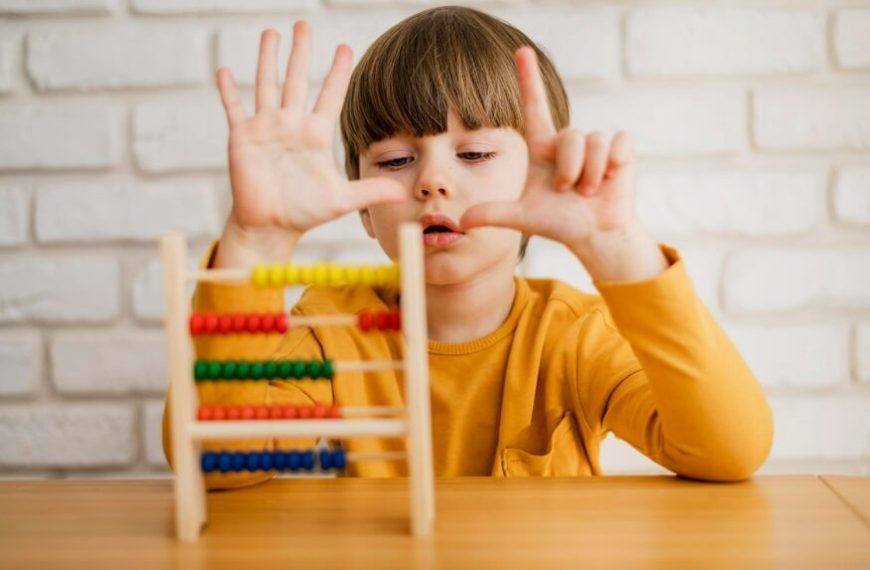As parents and caregivers, we often strive to provide our little ones with engaging and interactive learning experiences. Moreover, mastering basic math skills during early childhood sets the stage for more complex mathematical understanding in later years. It instills a sense of confidence and comfort with numbers, making the learning journey smoother and more enjoyable. The practical applications of math are pervasive in daily life, and starting the learning process early helps children navigate and understand the world around them with a solid mathematical foundation.
From simple objects found around the house to craft materials, there are countless possibilities for crafting math tools tailored to the developmental needs of toddlers. Creating homemade math manipulatives not only encourages early math skills but also sparks creativity and resourcefulness. It is both efficient and entertaining to expose toddlers to the realm of mathematics principles by having them participate in hands-on activities. Let’s explore the world of DIY (Do It Yourself) math manipulatives—simple, creative, and interactive tools crafted to make math learning an enjoyable adventure for your little one.
Understanding Math Manipulatives
What Are Manipulatives in Math?
Manipulatives in math are physical objects that help children visualize and understand mathematical concepts. These tangible tools provide a hands-on approach, allowing toddlers to explore and experiment with numbers, shapes, and patterns in a concrete way.
Interactive Math Manipulatives
- Counting with Everyday Objects:
- Shape Sorting with Craft Foam:
- Number Line with Painter’s Tape:
Use household items like buttons, pom-poms, or cereal to practice counting. Place a small quantity in each container and let your toddler count them. This hands-on interactive math manipulatives approach makes counting a tangible and enjoyable experience, fostering a positive attitude towards math.
Cut craft foam into different shapes and colors. Ask your toddler to sort them into respective categories. This interactive activity enhances shape recognition and sorting skills in an engaging and educational way.
Create a vibrant number line on the floor using colorful painter’s tape. Place numbered cards or stickers along the line and encourage your toddler to hop or step on the numbers in sequence. This lively and interactive activity introduces the concept of number order in a playful manner, making learning fun.
List of Math Manipulatives
- Building with LEGO Duplo Blocks:
- Pattern Cards with Craft Sticks:
- Shape Puzzles with Cardboard:
Utilize LEGO Duplo blocks to teach counting, patterns, and basic addition. Create towers with a specific number of blocks or build simple patterns together. The tactile nature of the blocks adds a sensory element to math exploration, making it a multisensory experience for toddlers.
Paint or color craft sticks in different hues. Create pattern cards by arranging the sticks in various sequences. Let your toddler replicate the patterns or create new ones. This creative activity promotes pattern recognition and fine motor skills development, fostering a holistic learning approach.
Cut out large shapes from cardboard and create corresponding smaller shapes for a puzzle. Your toddler can match the smaller shapes to their larger counterparts, reinforcing shape recognition and spatial awareness. This hands-on puzzle-solving activity enhances cognitive skills in a playful manner.
Hands-On Math Manipulatives
- Math with Playdough:
- Sorting Pom-Poms with Ice Cube Trays:
- Number Recognition with Bottle Caps:
Make your own playdough and use it to mold numbers and shapes. Your toddler can roll out snakes to form numbers or create different shapes, making math a tactile and creative experience. This hands-on math manipulative activity not only reinforces math concepts but also encourages artistic expression and fine motor skills.
Provide colorful pom-poms and ice cube trays. Encourage your toddler to sort the pom-poms by color into each compartment. This simple sorting activity enhances color recognition and fine motor skills, offering a hands-on approach to learning.
Write numbers on bottle caps and place them in a bag. Have your toddler pick a bottle cap, identify the number, and place it in the corresponding spot. This engaging activity reinforces number recognition and counting skills, transforming ordinary bottle caps into educational tools.
Virtual Math Manipulatives
- Digital Counting with Apps:
- Number Line on a Tablet:
- Virtual Shape Sorting Games:
Explore interactive math apps designed for toddlers. Many apps use virtual manipulatives to teach counting, number recognition, and basic math concepts in a playful and engaging way. This digital approach adds a technological dimension to early math exploration.
Use drawing or note-taking apps to create a virtual number line on a tablet. Move numbered objects along the line and ask your toddler to interact with the numbers, introducing the concept of sequencing in a digital format. These virtual math manipulative activities combine technology with math education, catering to the modern learning environment.
Download shape sorting games that allow toddlers to drag and drop virtual shapes into corresponding categories. This hands-on experience in the digital realm enhances shape recognition skills, providing a screen-based alternative to traditional manipulatives.
DIY Math Manipulatives
- Number Bean Bags:
- Math Bingo with Homemade Cards:
- Counting Beads on a String:
Create bean bags with numbers on them. Toss the bean bags onto a mat and ask your toddler to identify the number landed on. This active and physical game combines gross motor skills with number recognition, promoting a healthy and active approach to learning.
Make bingo cards with numbers or simple math problems. Call out the numbers or equations, and let your toddler place a marker on the correct answer. This game adds an element of excitement to math practice, turning a traditional game into an educational opportunity.
Thread colorful beads onto a string and knot the ends. Encourage your toddler to slide the beads while counting aloud. This tactile and visual activity strengthens counting skills and hand-eye coordination, providing a sensory-rich experience.
Math manipulatives are a valuable tool in introducing mathematical concepts to toddlers. The DIY ideas mentioned above offer a budget-friendly and creative way to enhance your child’s math skills through hands-on experiences. Whether using everyday objects, crafting simple tools, or exploring virtual options, these activities make math an enjoyable and interactive part of your toddler’s learning journey. So, roll up your sleeves, gather some materials, and embark on a math adventure with your little one! By infusing the list of math manipulatives into learning, you’re not just teaching math; you’re cultivating a love for exploration and discovery. As you witness your toddler’s eyes light up with curiosity, you’ll be reinforcing a positive association with math that extends beyond the learning environment and into everyday life.
Transforming math learning into a playful and engaging adventure for toddlers, EuroKids introduces the concept of DIY Math Manipulatives. These hands-on tools serve as creative aids to make math exploration a sensory-rich experience. From crafting number bean bags for an active toss-and-identify game to shaping puzzles with cardboard for spatial awareness, each DIY idea adds a touch of innovation to early math education. Whether it’s counting colorful pom-poms with ice cube trays or creating a virtual number line on a tablet, EuroKids embraces a diverse range of activities that cater to modern learning environments. These DIY math manipulatives not only reinforce essential math concepts but also foster a love for exploration and discovery, making learning an enjoyable journey for toddlers.















